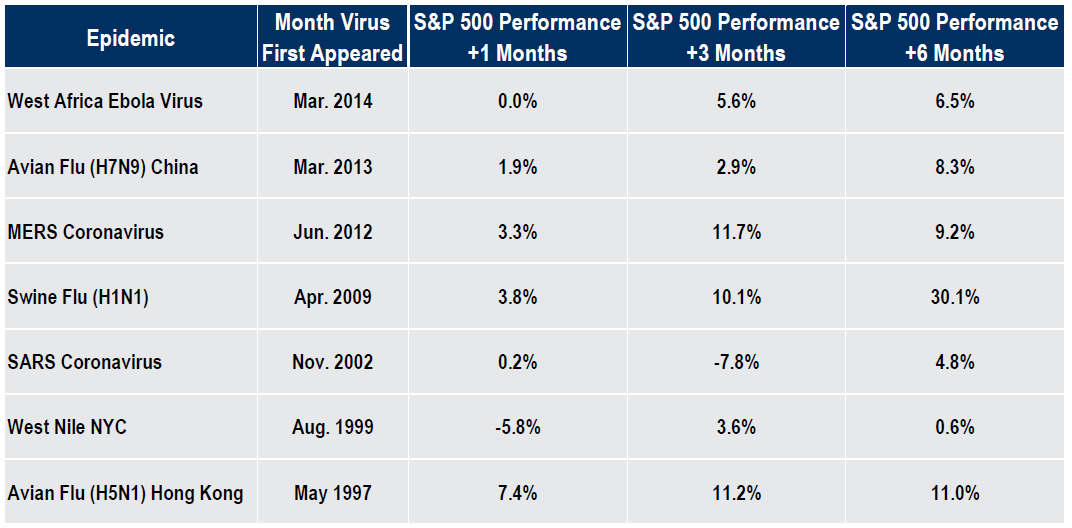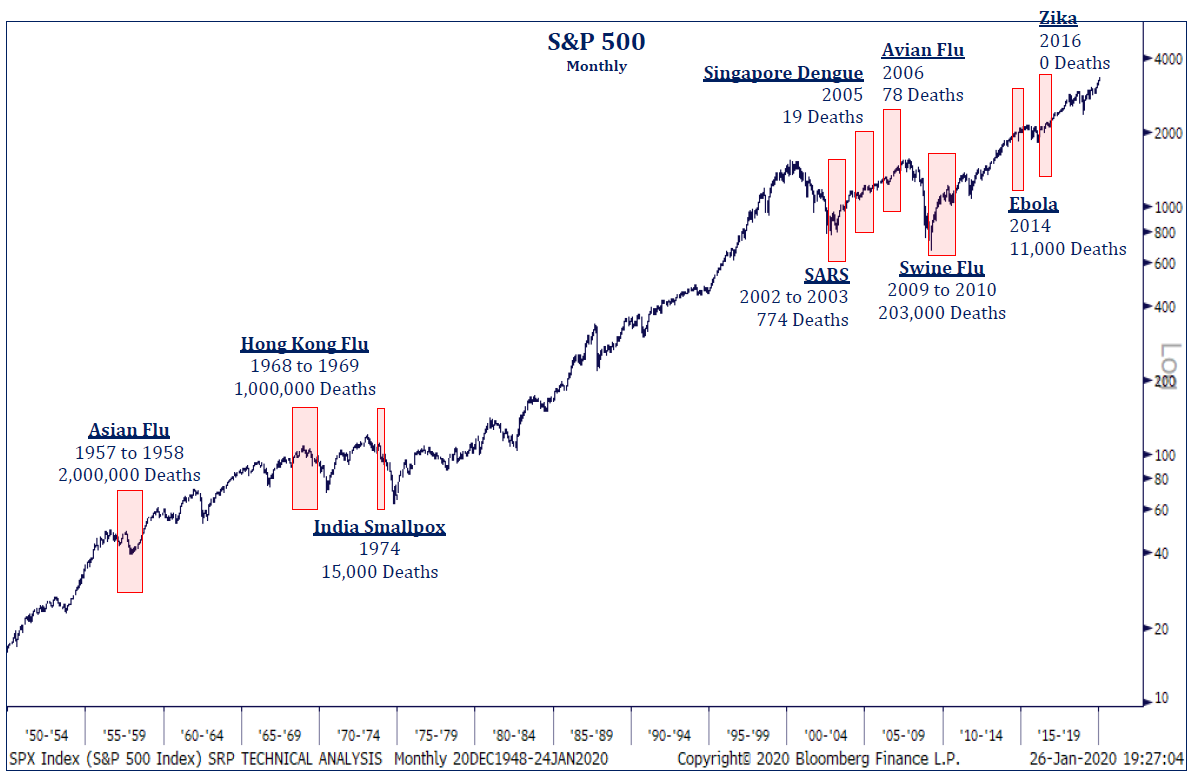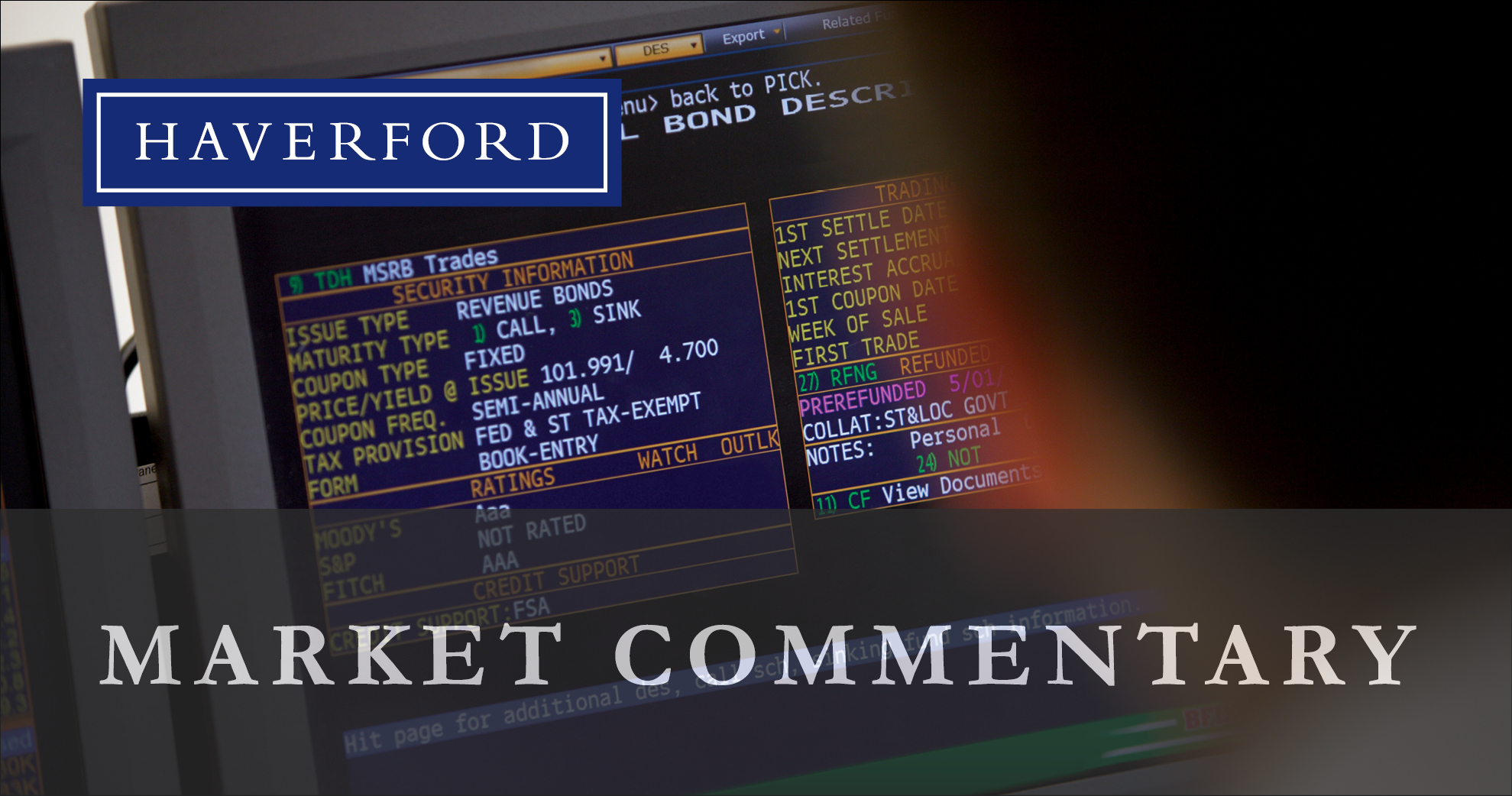The Paradox of Hypervigilance
Tim Hoyle, Co-Chief Investment Officer
thoyle@haverfordquality.com
The S&P 500 suffered its worst weekly loss in six months not because of impeachment, poor earnings, or Brexit, but due to a virus. Much about the coronavirus is still unknown and unknown risks can be scary. Governments and health agencies are erring on the side of hypervigilance to prevent a pandemic. The unprecedented governmental and corporate response within and outside Wuhan, China will hopefully stem the spread of the virus. Hence, with hindsight this hypervigilance may appear to be overkill – a paradox. Markets are falling in response to the economic effects of today’s hypervigilance. CNBC reports that areas of China responsible for approximately 80% of GDP and 90% of exports will be shut down until at least February 9. Chinese demand for crude oil dropped 20% last week. Shutting down major metropolitan cities, restricting air travel, and quarantining those potentially exposed to the virus have the potential to create a hysteria in the world of 24 hour news and social media, but we are optimistic these measures will mitigate the spread of the virus and its toll on human life.
Past outbreaks have had only a transitory effect on the global economy, but during the past 10 years the Chinese consumer has grown in relevance and global supply chains have become more intertwined. Economists are predicting that first quarter Chinese GDP will likely be at least 1% lower, and here in the United States, the 10-year Treasury responded to the chance of a slowdown by falling below 1.6%. The best case projections call for at least 6 months’ worth of disruptions to global trade. The coronavirus outbreak comes at a point in time when the global economy looked poised to re-accelerate. Trade deals have recently been signed and we had seen a bottoming in some Chinese and European data points. The good news is that some economic risks had been taken off the table before this past week. The bad news is the coronavirus will impair growth in 2020.
When we wrote of increased volatility in 2020, we were envisioning political risks and not the risk of pandemic. No matter, our response will be no different. Using history as their guide, investors entering 2020 with an individually appropriate asset allocation should stay the course, and those with cash to put to work should welcome a pullback as an opportunity to invest. At Haverford, we will always work to ensure our clients are properly diversified and that our investments are in solid companies with a pedigree of navigating risks and finding opportunities where others see danger.
The coronavirus is the type of unforecastable risk that throws a wrench into the best-formulated projection. For instance, we wrote in our 2020 Outlook that the Federal Open Market Committee (FOMC) would likely stand pat throughout the year. The coronavirus may end up posing the type of economic risk that propels the FOMC to cut rates. Forecasting is fraught with folly, which is why no one is very good at it. We discuss this and the steps investors can take to make and use forecasts better in our fourth installment of a series on the past decade and potential implications for investors in the future. Click here to read HAVERFORD INSIGHTS 2020: FORECAST AT YOUR OWN PERIL.
Past epidemics have proven to have only a transitory effect on Markets. We believe the hypervigilance being exhibited around the world—while severely affecting near-term GDP—increases the chances of this virus, too, having only a transitory outcome.


